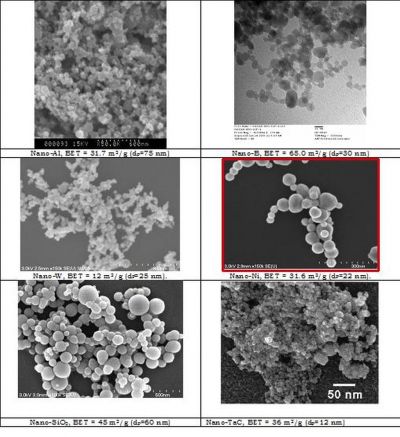Nanoparticles as compact laser sources

Various nanoparticles samples
By Xfanplasma (Own work) [CC BY-SA 3.0 (http://creativecommons.org/licenses/by-sa/3.0) or GFDL (http://www.gnu.org/copyleft/fdl.html)], via Wikimedia Commons
Quantum dots (QDs) are nanocrystals of semiconductor materials so tiny that they are considered dimensionless. Scientists explored their growth and integration in novel lasers as an alternative to conventional solid-state devices.
Ranging from 2 to 10 nm (10–50 atoms) in size, QDs exhibit quantum size
effects such as discrete quantised energy levels. Manipulation of those
effects has opened the door to applications in quantum computing,
medical imaging, photovoltaics and detectors.
Nanocrystals can produce different colours depending on the size of
the particles. The colours, representing different energies, can be
exploited in laser sources as an alternative to expensive, complex and
cumbersome solid-state devices. Scientists set out to develop novel
materials, devices and design systems relevant to QD-based compact laser
devices with EU support of the project QDLASER. The focus was on
epitaxial growth of QD-based laser structures and associated testing and
measurements of materials and devices.
Researchers targeted QD materials working in the spectral range of
1,0–1,6 microns for highly efficient, ultra-short pulse (down to
100 femtoseconds) laser sources. They utilised the indium
arsenide/indium phosphide material system that has a wavelength range
around 1,5 microns.
QDs were synthesised primarily via self-assembly (using the
Stranski–Krastanow growth method). Following characterisation,
scientists evaluated the properties of the assembled QDs as a gain
medium. The QD materials were implemented in laser devices (narrow-ridge
single-mode lasers and photonic crystal cavity lasers) in which lasing
in the continuous mode was successfully demonstrated. Scientists
developed tailored growth regimes for self-assembly of QDs and also
conducted a first experiment on a new approach to QD synthesis
(selective area growth approach assisted by diblock copolymer
lithography).
The team is on its way to femtosecond laser operation and an
emission wavelength of 1,5 microns, expected to be accomplished in the
near future. Technology has the potential to enhance performance of a
number of devices in applications including telecommunications, medical
imaging and metrology.
published: 2015-04-03

